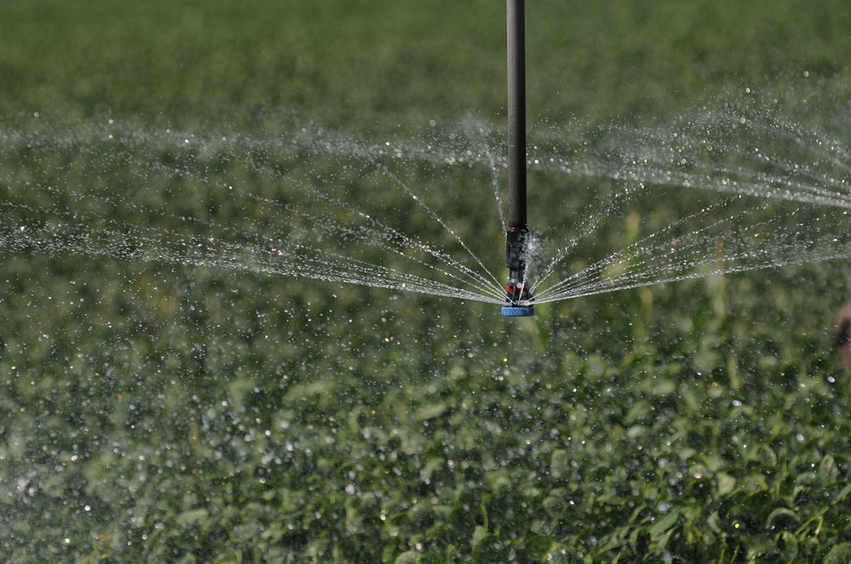 Findings validate voluntary conservation efforts in northwest Kansas
Findings validate voluntary conservation efforts in northwest Kansas
MANHATTAN – When a group of farmers in northwest Kansas decided to voluntarily reduce their use of groundwater, no one really knew how that might affect their profitability.
Five years later, they have an answer.
In what can be considered a win for agriculture, Kansas State University agricultural economist Bill Golden is reporting that when farmers in the Sheridan County No. 6 Local Enhanced Management Area reduced water use by 20 percent, they actually made more money on their crops.
“There’s no two ways about it: What this has shown is that producers can reduce water use; they can slow the decline of the aquifer; and they can do this while making healthy profits,” Golden said.
A LEMA is a producer-driven conservation program in which farmers form a contract with the Kansas Division of Water Resources to voluntarily reduce their use of water. The agreement can be for any amount of time and include whatever goals the farmers want.
In the case of the Sheridan No. 6 LEMA, the farmers decided to reduce water use by 20 percent for five years. That agreement meant that the farmers were agreeing to an allocation of 55 inches of water per acre over a five-year period. In dry years, they might use a little more, or perhaps a little less in years when it rains more.
“What we saw is that they reduced corn acres, and when they did that, they also reduced the amount of water they were using on those corn acres,” said Golden, adding that many farmers instead increased irrigated wheat and grain sorghum acres.
Overall, the LEMA reported a decrease in groundwater use of 23.1 percent. Golden noted that a hydrology study done through the Kansas Geological Survey indicated that the decline rate of the Ogallala Aquifer in the area of the LEMA went from two feet per year to less than a half foot per year.
At the same time, producers reported greater profits due to less inputs and increased management.
“What we are seeing is that producers reduced fertilizer and seeding rates, and they have increased what I will call management,” Golden said. “Increasing management is hard to get a handle on, but when I talk to these guys, what they tell me is, ‘Bill, where we used to water, if we thought the crop needed water, today we look ahead four or five days and we ask is it going to rain or is it not going to rain. If we think it’s going to rain, we don’t water.’”
Producers inside the LEMA reported 4.3 percent more cash flow than their higher-yielding counterparts just outside the LEMA. Complete data is not available for crops other than corn, but Golden suspects that the trend will be very similar.
Another surprise finding – and one that may encourage producers to consider this approach in the future – is that the water that producers save remains available to them later on.
A related hydrology study “has shown that the water that the producers are saving is staying under their property,” Golden said. “And that’s important for producers to realize that whatever they save today, they get to use that water at some point in the future.”
Golden said the study relied on self-reported data from producers. The LEMA was monitored from 2012 through 2017, and the arrangement worked so well that the farmers applied to the Kansas Division of Water Resources to extend the project an additional year.
“That tells you something about how effective the LEMA has been for irrigation conservation and its effects on producer’s economic returns,” Golden said.
Golden’s full report is available online through the K-State Department of Agricultural Economics, located at AgManager.info. The work was completed with assistance of the Kansas Geological Survey and the Kansas Division of Water Resources, in addition to other local partners.
